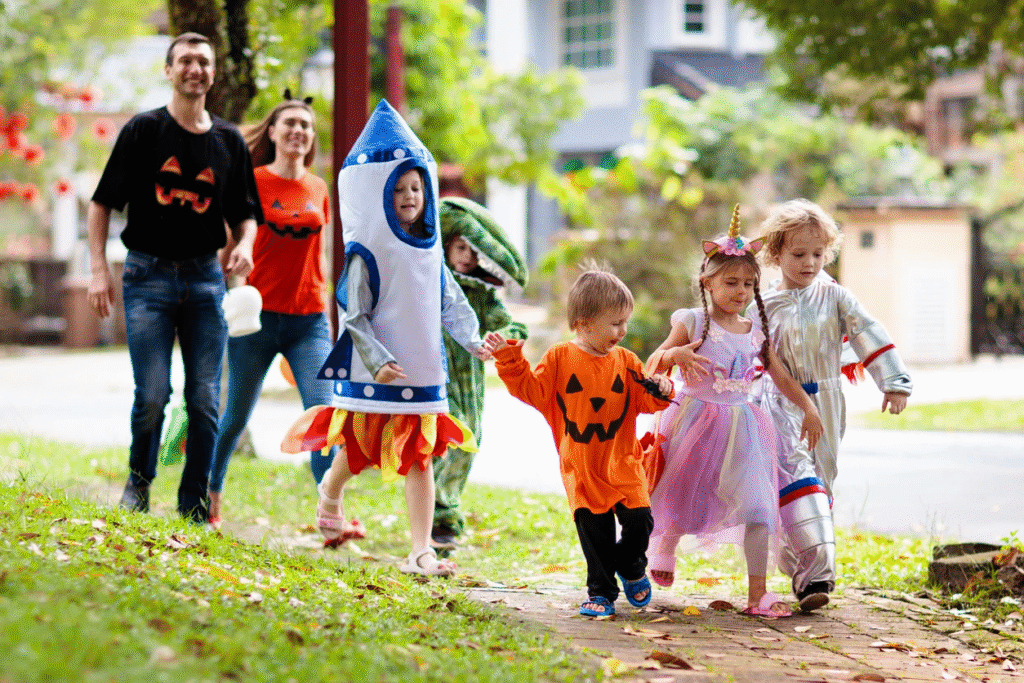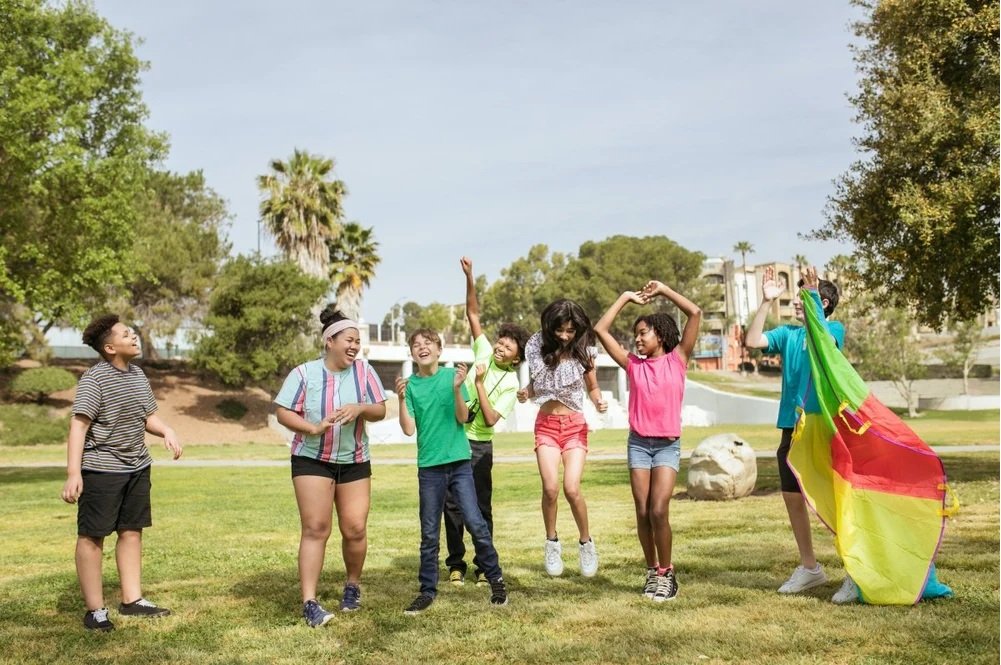As parents, there’s no higher priority than ensuring the safety and well-being of our children. In today’s fast-paced, digitally-driven world, threats to children’s safety come in many forms—both online and offline. From physical dangers at home and school to cyberbullying and exposure to inappropriate content on the internet, the challenges are numerous. That’s why this comprehensive guide, Kids’ Safety 101, aims to equip parents with essential, practical, and up-to-date tips to keep their children safe at Kids’ Safety 101: all times.

1. Home Safety: The First Line of Defense
Home is where a child should feel safest. However, statistics reveal that many injuries to young children occur at home due to lack of precautions. Here Kids’ Safety 101: are steps every parent should take:
A. Childproofing Essentials
- Cover electrical outlets with safety plugs.
- Secure furniture to the walls to prevent tip-overs.
- Install baby gates at stairs and other dangerous areas.
- Lock cabinets that contain cleaning supplies, medicines, or sharp objects.
B. Safe Sleeping Practices
- Ensure your baby sleeps on their back on a firm mattress without pillows or stuffed toys.
- Use a crib that meets safety standards (no drop-side cribs).
C. Fire and Carbon Monoxide Safety
- Install smoke detectors and CO detectors in key areas of the home.
- Teach older children what to do if they hear an alarm
2. Outdoor Safety: Navigating the World Outside
As children explore their surroundings, it’s vital they understand basic safety principles Kids’ Safety 101: when outdoors.

A. Road Safety Rules
- Teach your children to look both ways beore crossing.
- Always cross at zebra crossings or traffic signals.
- Hold hands in parking lots and crowded areas.
B. Bicycle and Sports Safety
- Ensure your child wears a properly fitted helmet when cycling or skateboarding.
- Equip bikes with reflectors and lights for visibility.
C. Stranger Danger Awareness
- Teach kids to never accept rides, gifts, or food from strangers.
- Have a family password that a person must say if they are picking the child up unexpectedly.
3. Digital Safety: Navigating the Online Jungle
With more children gaining access to the internet at a younger age, digital safety has become just Kids’ Safety 101: as important as physical safety.
A. Setting Boundaries
- Create a family tech agreement: limit screen time, block certain sites, and set usage hours.
- Use parental control software on devices.
B. Educate About Cyberbullying
- Explain what cyberbullying looks like and why it’s harmful.
- Encourage your child to speak up if they or someone they know is being bullied online.
C. Social Media and Privacy
- Teach your children not to share personal details online—full name, school, address, or pictures.
- Monitor their friend lists and interactions.
4. School Safety: Ensuring Well-Being in Learning Environments
Children spend a large portion of their day at school. Ensuring their safety in educational institutions Kids’ Safety 101: is essential.
A. Emergency Preparedness
- Familiarize your child with school emergency procedures—fire drills, lockdowns, etc.
- Ensure the school has your current contact information.
B. Bus and Commute Safety
- Teach kids to stay seated and follow rules while on the school bus.
- Practice the walking route to school together if they go on foot.
C. Anti-Bullying Measures
- Encourage open communication about peer relationships.
- Teach children how to handle conflict and seek help from trusted adults.
5. Health and Hygiene: A Key to Preventive Safety
Ensuring your child understands basic health practices Kids’ Safety 101: can prevent many common illnesses and long-term issues.
A. Handwashing Habits
- Teach children to wash their hands before eating, after using the bathroom, and after playing outside.
- Use fun songs or games to make it enjoyable for younger children.
B. Safe Food Practices
- Ensure school lunches are stored properly with ice packs.
- Teach children not to share food or drinks to avoid the spread of germs.
C. Recognizing Allergies
- Teach your child to identify and avoid allergy triggers (e.g., peanuts, dairy).
- Inform teachers and caregivers about allergies and supply necessary medications, like EpiPens.
6. Emotional Safety: Building a Safe Space for Expression
Physical safety is crucial, but emotional well-being plays an equally important role in Kids’ Safety 101: a child’s development.
A. Open Communication Channels
- Make sure your child knows they can talk to you about anything without judgment.
- Practice active listening and validate their emotions.
B. Teach Consent and Boundaries
- Teach children that their body belongs to them, and they have the right to say “no” to unwanted touch.
- Use age-appropriate language to explain good touch and bad touch.
C. Encourage Mental Health Check-ins
- Watch for signs of stress, anxiety, or depression.
- Encourage hobbies, sports, or other creative outlets for stress relief.
7. Safety During Travel and Vacations
Whether it’s a family road trip or a flight across the country, travel presents unique safety concerns.
A. Packing Smart
- Include a first aid kit, emergency contacts, and medications.
- Pack ID bracelets or cards for younger kids.
B. Hotel and Vacation Safety
- Teach children the hotel name and room number.
- Set clear rules about staying with adults and not wandering off alone.
C. International Travel Precautions
- Check health advisories and vaccinations needed for foreign countries.
- Educate children on cultural norms and emergency numbers of the destination country.
8. Emergency Preparedness at Home
Preparing for natural disasters, accidents, or emergencies can save lives.
A. Create a Family Emergency Plan
- Practice fire escape drills.
- Designate meeting points and emergency contacts.
B. Teach Basic First Aid
9. Water Safety: Pools, Beaches, and Bathtubs
Drowning is one of the leading causes of accidental death in children under 14. Preventive measures Kids’ Safety 101: are critical.
A. Never Leave Children Unattended
- Always supervise kids near pools, lakes, or bathtubs—even if they know how to swim.
B. Swimming Lessons
- Enroll children in swimming classes early.
- Teach them how to float, tread water, and call for help.
C. Pool Safety Equipment
- Install pool fences and covers.
- Have life-saving devices (e.g., life rings, hooks) nearby.
10. Teaching Safety Through Play and Role-Playing
Children learn best when they’re engaged. Role-playing scenarios is a fun and effective way to Kids’ Safety 101: teach safety rules.
A. “What Would You Do If?” Games
- Act out different situations: being lost in a mall, a stranger offering candy, or a fire at home.
B. Storybooks and Shows
- Use educational books and videos that teach safety lessons through stories and characters.
11. Creating a Supportive Safety Network
Safety is not just the responsibility of the parents—it’s a community effort.
A. Trusted Adults
- Help children identify safe adults in various environments—teachers, police officers, family friends.
B. Community Awareness
- Join or start a neighborhood watch.
- Get involved in school safety committees.
Final Thoughts: Safety is a Lifelong Lesson
Ensuring your child’s safety isn’t a one-time conversation—it’s a continuous process that evolves as they grow. From toddlers who need baby-proofed homes to teens who navigate social mediaKids’ Safety 101: and peer pressure, each stage requires tailored safety strategies. As a parent, your consistent presence, open communication, and proactive efforts can lay a strong foundation for your child’s secure and confident future.
Teaching safety empowers children to trust their instincts, recognize danger, Kids’ Safety 101: and know how to respond. The goal isn’t to create fear but to foster awareness, responsibility, and resilience.
Quick Checklist for Busy Parents
✅ Have you childproofed your home?
✅ Does your child know your phone number and address?
✅ Have you discussed online safety rules?
✅ Are emergency contact numbers accessible?
✅ Have you practiced what to do in an emergency?
✅ Does your child know the concept of body boundaries?
✅ Is your home equipped with smoke and CO detectors?
✅ Have you had a recent safety talk this month?
If you answered “yes” to most of these, you’re already doing great. If not, start today—because nothing is more important than keeping our children safe.
Read more https://magazinesnove.com/top-budget-mobiles-in-2025-best-picks-under/


